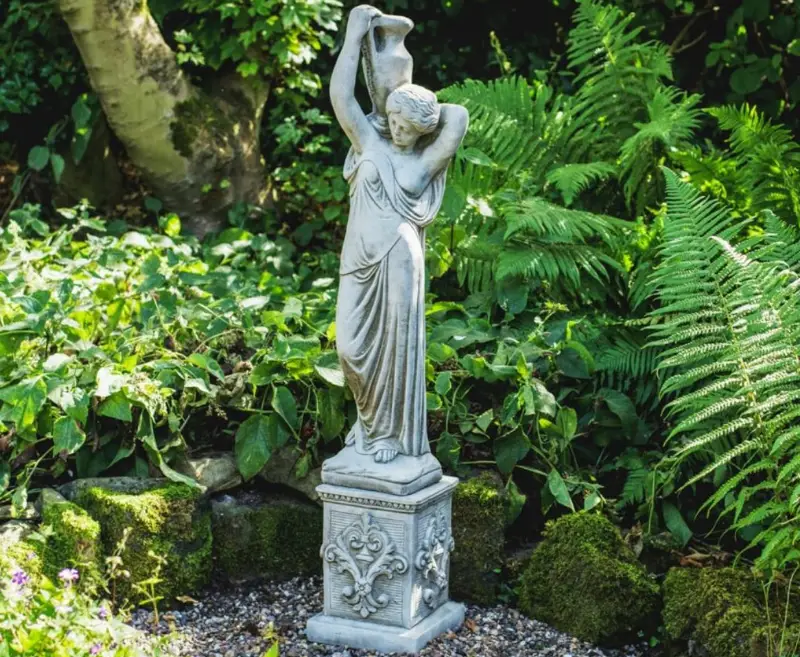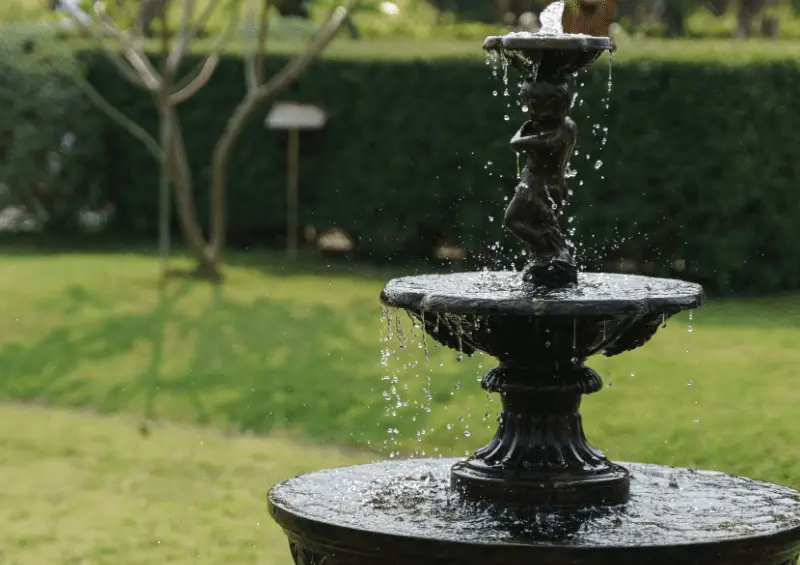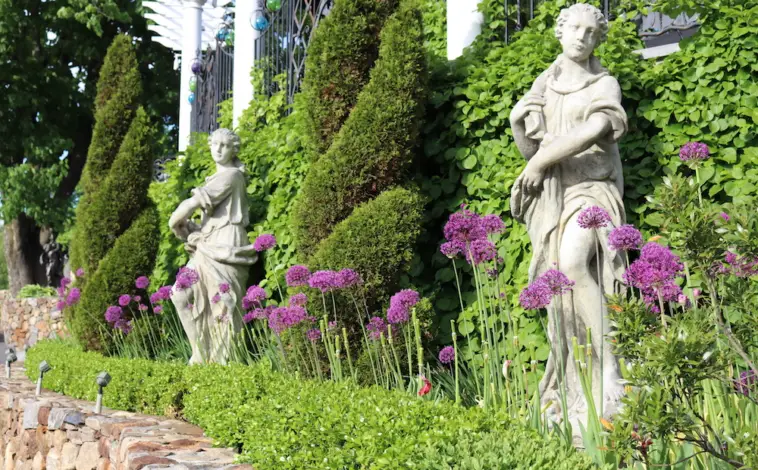Although they have their roots in ancient history, classical gardens can perfectly fit the minimalist contemporary house designs of today. After all, just like modern architecture, these gardens are also known for their clean lines, perfect symmetry, neutral colours and use of materials like stone and marble.
That said, with so many Australian dwellings featuring clean classical and minimalist elements, it just makes sense that our outdoor spaces also follow suit. When done right, implementing the hallmarks of the classical garden design can result in a space that exudes a calm sophistication where you can reflect freely on the wisdom of ancient philosophers.
So in the spirit of Michelangelo, we urge you to embrace the Renaissance ideals in modern adaptations. Discover how contemporary elements can intermingle seamlessly with historical aesthetics, creating a truly unique garden masterpiece.
Selecting the Perfect Location

Before diving into the design process, carefully consider the location of your garden. Assess the size and shape of your outdoor space and take note of the amount of sunlight and shade it receives. This information will guide your design choices and ensure the success of your classical garden.
Creating a Symmetrical Layout and Structure
Classical gardens often feature a central axis, creating a sense of direction and purpose. Incorporate symmetrical patterns and pathways to establish a strong focal point. Consider installing garden ornaments or sculptures at key intersections to draw the eye and add interest.
To strike a balance between hardscape and greenery, use hedges and borders to define spaces and create visual boundaries. Pathways can be made from gravel, stone, or brick to enhance the traditional feel.
Classical Sculptures Depicting Greek and Roman History

Select statues and architectural elements that resonate with the classical aesthetic you wish to evoke. Greek and Roman sculptures, for example, add an authentic touch. Position these pieces strategically to create captivating focal points throughout the garden.
Greek sculptures are renowned for their elegance, grace, and celebration of the human form. Influenced by the philosophy of humanism, these classical Roman statues embody the idealized beauty of the human body and represent the harmonious balance between the physical and spiritual realms. The most famous example of Greek sculpture, the Venus de Milo, stands as a symbol of feminine beauty and has captured the hearts of art enthusiasts worldwide.
The Romans, known for their grandeur and opulence, expanded upon the Greek sculptural traditions, infusing their art with a sense of power, authority, and realism. The Classical Roman sculpture designs on the market often depict emperors, gods, and mythological scenes, encapsulating the essence of Roman society and its aspirations.
One of the most celebrated figures in Roman mythology was Hercules, the epitome of strength and heroism. Sculptures of Hercules often portrayed him with his iconic lion’s skin and club, symbolising his victorious battles against fierce beasts. Including a statue of Hercules in your classical garden pays tribute to the Roman admiration for courage and valour, inspiring visitors with his legendary feats.
Among the masterpieces of art history, Michelangelo’s David stands as a modern embodiment of classical ideals. Although Michelangelo was an Italian artist of the Renaissance, his David statue exemplifies the fascination with classical aesthetics during this period.
The sculpture portrays the biblical hero David with a powerful and idealised physique, reflecting the influence of ancient Greek and Roman sculptures on Renaissance art. Adding a replica of Michelangelo’s David in your classical garden not only connects with Roman artistic influence but also showcases the timeless impact of classical ideals on Western art.
Beyond the fierce warriors and heroes, classical Roman sculpture art also captured the nuances of love and passion. The tale of Cupid and Psyche, a popular mythological story, depicted the passionate love between the beautiful mortal Psyche and the mischievous god of love, Cupid. Including a sculpture of Cupid and Psyche in your classical garden adds an element of romance and enchantment, celebrating the eternal allure of love’s triumph over adversity.
Architectural Features as Echoes of Past Civilisations
Beyond sculptures, classical gardens often feature architectural elements reminiscent of ancient civilisations. Columns, inspired by Greek and Roman orders (Doric, Ionic, and Corinthian), provide verticality and structure to garden spaces. Pergolas adorned with climbing vines offer shaded walkways and evoke a sense of ancient colonnades.
Roman-style pavilions, with their half-dome roofs and intricate detailing, serve as ideal retreats for contemplation, immersing visitors in the beauty and serenity of classical design. These architectural features serve both practical and aesthetic purposes, creating focal points and harmonizing the garden with its historical roots.
Water Elements

Water plays a pivotal role in classical gardens, symbolizing life, purity, and rejuvenation. When adding water features, ensure they complement the garden’s theme and flow naturally with the surrounding landscape. Consider installing a tiered fountain or a reflective pool to capture the elegance of historical garden design.
Plant Selection

When choosing plants for your classical garden, opt for species that hold historical significance and can thrive in your local climate. Roses, lavender, boxwood, and cypress trees are popular choices that complement the classical design. Create colour palettes that harmonize with the surrounding architecture and make seasonal adjustments to ensure the garden’s beauty throughout the year.
The Takeaway
To wrap things up in a nice list you can copy-paste into your to-do notes, the following characteristics are central to the charm of classical gardens:
- Symmetry and Balance: These outdoor spaces should celebrate order and harmony. Achieving symmetrical designs with carefully balanced elements fosters a sense of serenity and unity.
- Use of Geometric Shapes and Patterns: Geometric patterns, such as parterres and knot gardens, are trademarks of classical garden design. These intricate arrangements of hedges and flowers add structure and elegance to the landscape.
- Water Elements: Water features, such as fountains, ponds, and water channels, are essential in classical gardens. The soothing sound of flowing water enhances the garden’s ambience and provides a refreshing touch.
- Classical Sculptures and Architectural Elements: Statues, columns, pavilions, and other architectural features contribute to the garden’s grandeur, evoking a sense of ancient splendour.
- Pruned Hedges and Topiaries: Neatly pruned hedges and meticulously shaped topiaries add a sense of order and refinement to classical gardens, reflecting the meticulous craftsmanship of the past.
- Thoughtful Plant Selection and Arrangement: Choosing plants that align with the garden’s historical theme and purposefully arranging them elevates the overall aesthetic.




